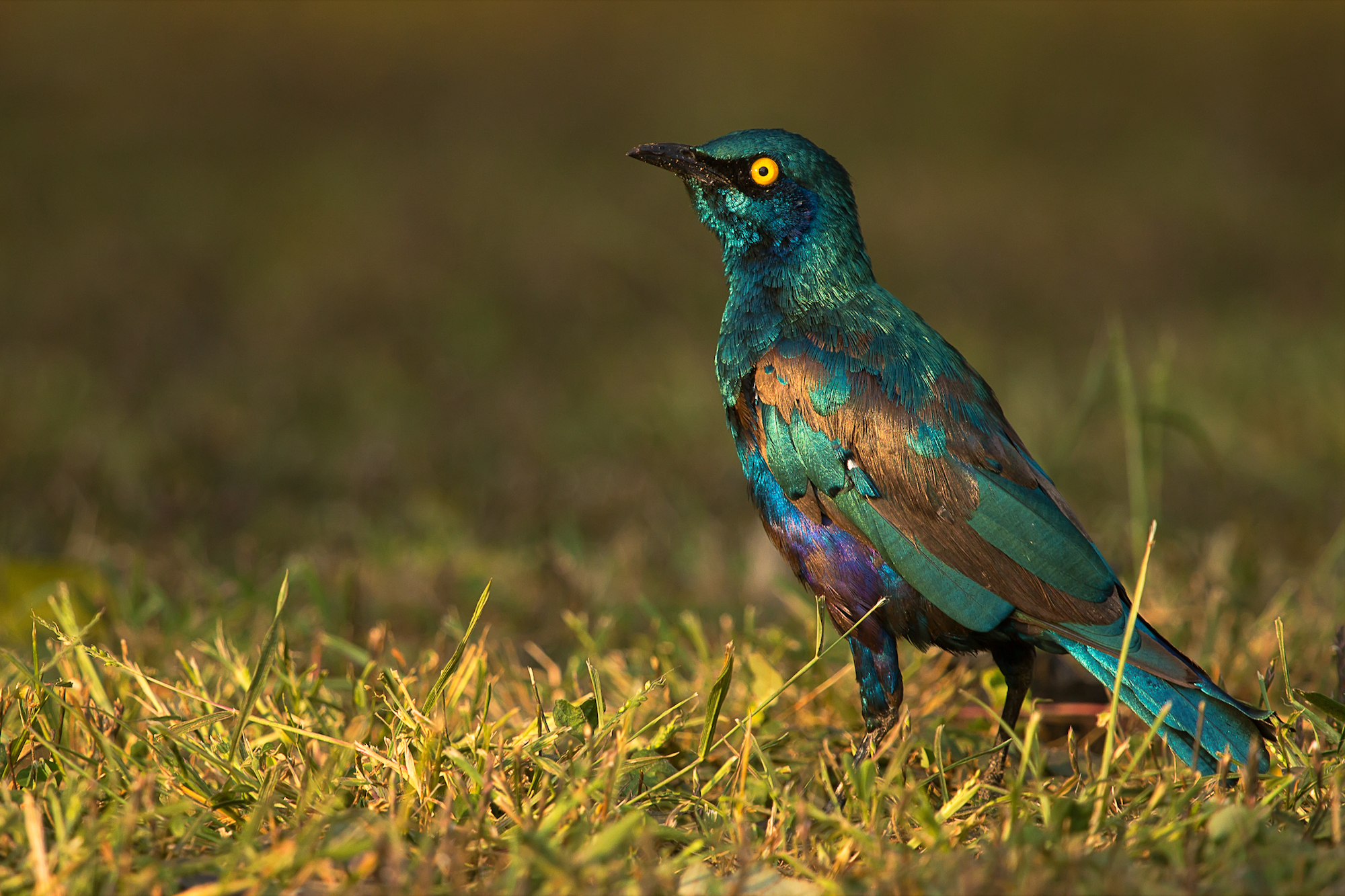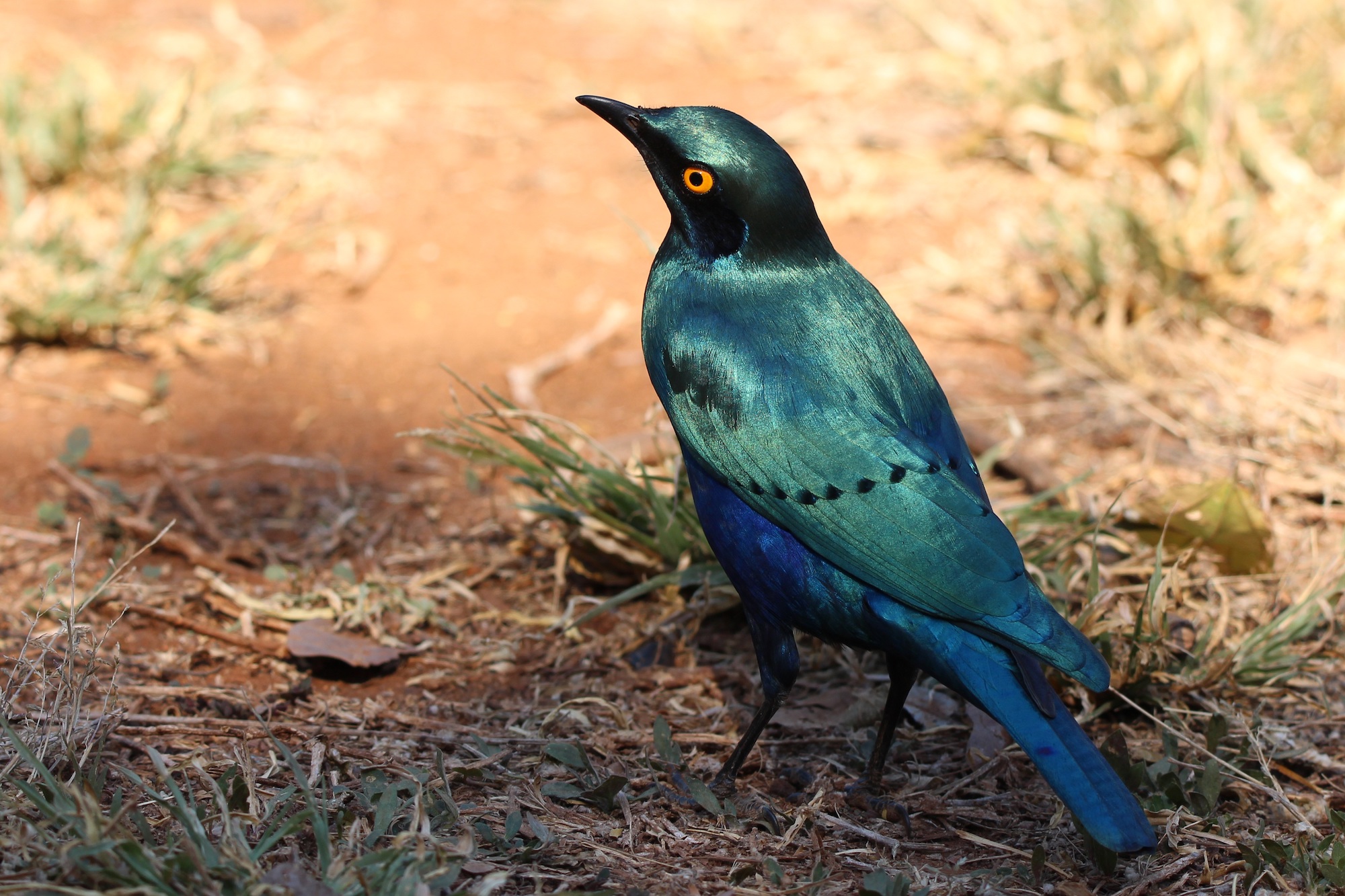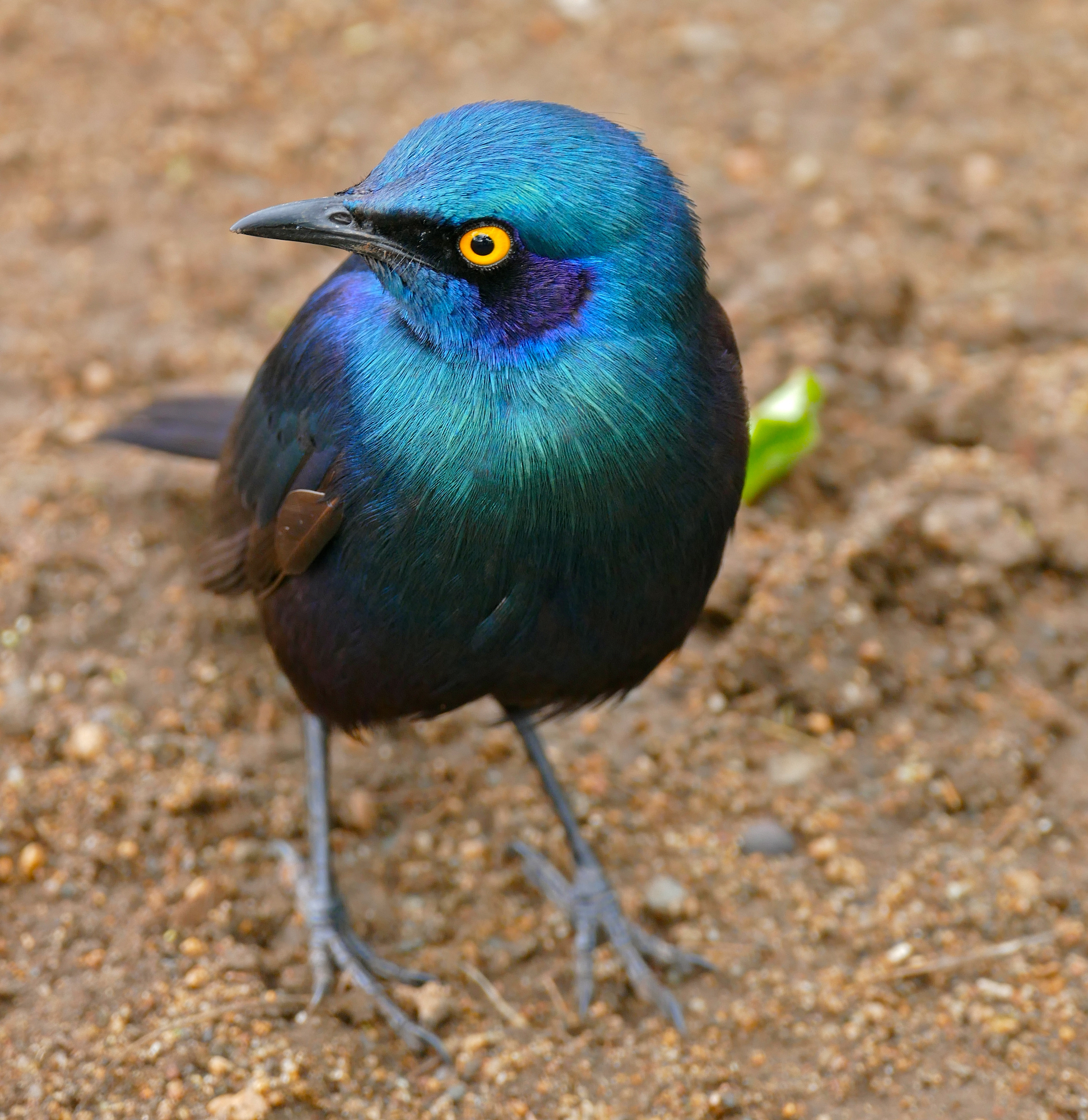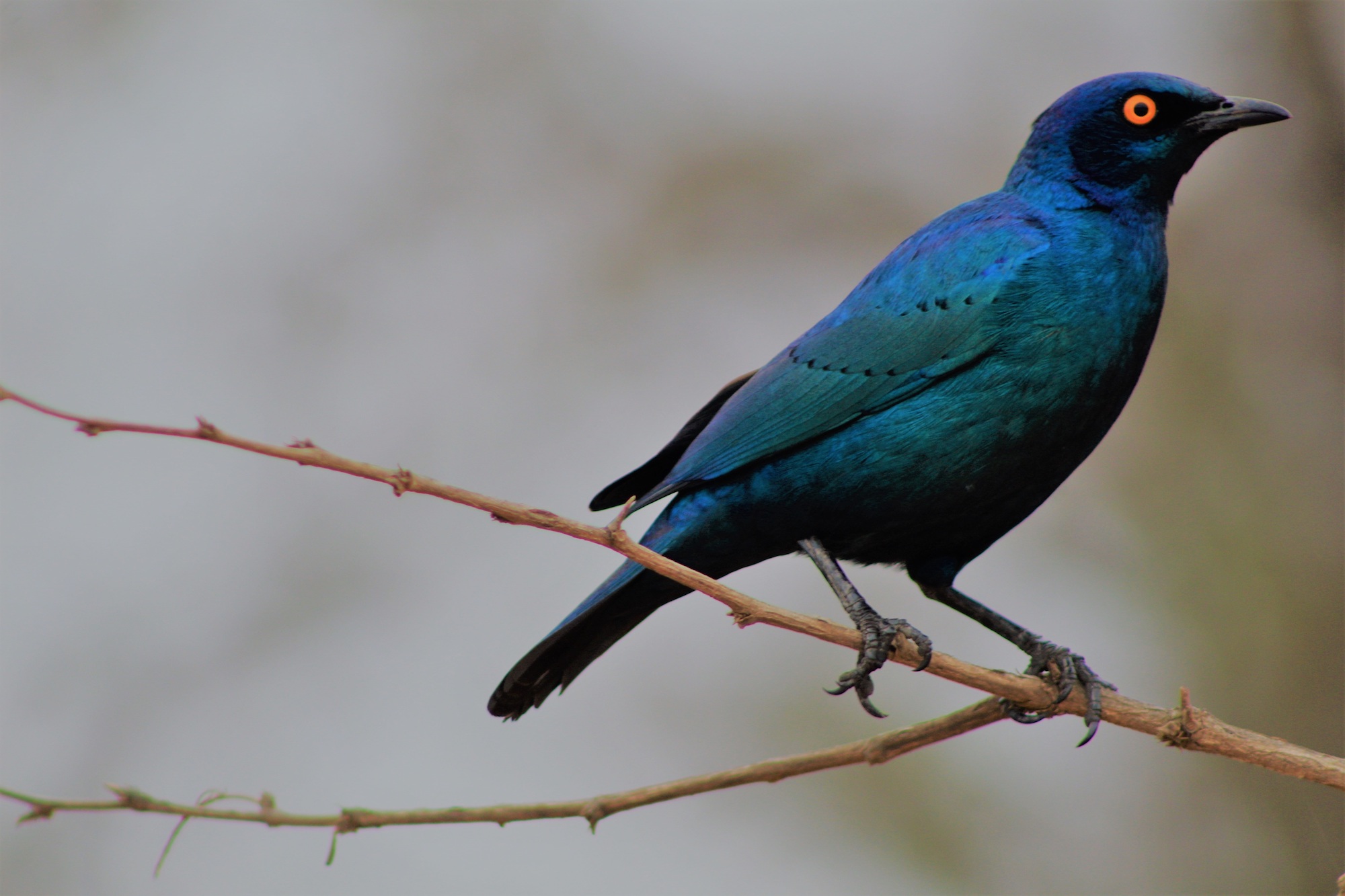Given it’s equatorial location & abundance of fresh water, the sheer density of wildlife in Uganda might make your head spin. There are (way) over 1000 bird species confirmed in the country alone. And what birds! Some of them look like actual runway models. We have already looked at the Violet-back, Red-wing, Wattled & Superb starlings. Today lets meet another member of the starling family, the (Greater & Lesser) Blue-eared Starling (or Lamprotornis chalybaeus & Lamprotornis chloropterus respectively).

Birds of Fashion
We have to admit that we find it difficult to tell the Greater & Lesser varieties apart, they are very similar in looks. Apparently in the Lesser variety’s blue plumage does not extend past the legs. For the purposes of this post we are going to assume (hope) their habitat & lifestyle are similar enough to lump them together. The Blue-ears have fabulous blue-green, blue-purple plumage with brilliantly contrasting bright yellow/orange eyes. This is another starling in which the sexes look physically similar, all beautiful!

Family Ties
Blue-eared Starlings are a common species of open woodland bird & follow some seasonal migration. They prefer to nest well up off the ground & while they are generally cavity-nesters (in crevices of rocks) they have been know to select reed beds, thorn bushes or Acacia trees for their homes. These social birds live & roost in groups. Both parents take responsibility for raising their offspring.

Blue-Eared Lifestyle
Like most starlings, the Blue-Eared Starling is an omnivorous bird, meaning they eat fruit (especially figs), berries & a variety of insects. Their habitat is mainly open woodland, often near human settlements & their diet mainly consists of insects & seeds foraged from the ground (often following livestock through fields eating insects disturbed by their movement). Although, like other starlings the Blue-ears help to remove parasites from livestock (useful for both parties).

More Birdwatching
We are excited to embark on this fun new series of posts & can’t wait to share more about the amazing bird species that make up the diverse wildlife of Uganda. Stay tuned for more to come & in the meantime, perhaps you should come visit Uganda & meet some of them for yourself!






